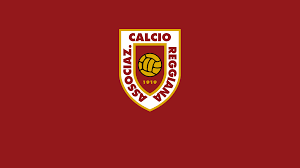Austin FC: The Ultimate Guide to the Lone Star Soccer Team

Austin FC
Austin FC has rapidly emerged as a prominent force in Major League Soccer (MLS), captivating fans and sports enthusiasts alike with its vibrant culture, passionate supporters, and competitive spirit. Known as the Lone Star State’s premier soccer team, Austin FC embodies the essence of Texas pride and modern athletic excellence. Whether you are a seasoned soccer aficionado or new to the sport, understanding the origins, development, and future trajectory of Austin FC offers an enriching perspective into this dynamic club.
This comprehensive guide unpacks everything you need to know about Austin FC—from its roots and operational philosophy to key players, community involvement, and tactical strategies. Dive deep into the history, analyze its season performances, and explore what makes this team a unique emblem of Texas sports culture.
The History and Foundation of Austin FC
The story of Austin FC began with a vision to bring top-tier professional soccer to the heart of Texas. This section explores how the club was founded, the initial challenges faced, and the milestones that marked its journey from conception to becoming an MLS franchise gmkb.
Understanding the origins of Austin FC reveals much about the city’s sporting ambitions and community spirit. It also highlights the strategic decisions made during its establishment, setting the foundation for its future growth and success.
The Birth of a Dream: How Austin Became an MLS City
Austin’s passion for soccer predates the club’s inception, with a thriving youth scene and enthusiastic local leagues. Recognizing the potential market and the city’s expanding population, stakeholders envisioned establishing a professional team that could unify and energize the community.
The push for an MLS franchise gained momentum through concerted efforts by city officials, investors, and soccer advocates. The bid process involved extensive planning, community outreach, and negotiations with league officials. Austin’s vibrant cultural identity, coupled with its burgeoning tech industry and diverse population, made it an attractive candidate for MLS expansion.
In 2018, MLS officially announced Austin FC as part of its expansion plan, marking a significant milestone. The franchise was awarded to a group led by influential investors, who committed resources to develop a state-of-the-art stadium and cultivating local talent. This moment not only elevated Austin’s profile in professional sports but also ignited hope among residents eager to see their city represented on the national stage.
Building the Team: Key Figures and Early Challenges
Forming a competitive squad required assembling a mix of seasoned international players, promising local talents, and strategic signings. The club’s management faced hurdles such as attracting high-caliber athletes amidst stiff competition from other clubs, securing financial backing, and establishing a coherent team culture.
Early recruitment focused on bolstering the roster with experienced veterans capable of providing leadership and stability. Simultaneously, scouting efforts targeted emerging talent within Texas and abroad, seeking players eager to make an impact both on and off the field.
Despite initial hurdles—including building team chemistry and navigating logistical issues—the club’s front office remained resolute. They emphasized fostering a strong community connection, aligning the team’s values with Austin’s unique identity. This approach laid the groundwork for a loyal fanbase and a resilient team ethos that continues to drive Austin FC forward.
First Seasons and Growing Pains
Austin FC’s debut season was filled with anticipation and learning curves. As a newly formed franchise, the team faced typical growing pains, adjusting to MLS’s competitive level and the intricacies of managing a professional sports operation.
Match performances showcased flashes of brilliance but also revealed areas needing improvement, particularly in defense and consistency. The coaching staff prioritized player development, tactical flexibility, and fostering a positive locker room environment.
Fan support quickly became evident, with sell-out crowds energizing the players and creating a formidable home advantage at Q2 Stadium. Over time, the team refined its playing style, emphasizing possession-based soccer combined with swift counterattacks aligned with modern MLS trends.
The evolution of Austin FC early years exemplifies resilience and adaptability. The club’s willingness to learn from setbacks and invest in youth development signals a long-term vision rooted in sustainable growth and community engagement.




